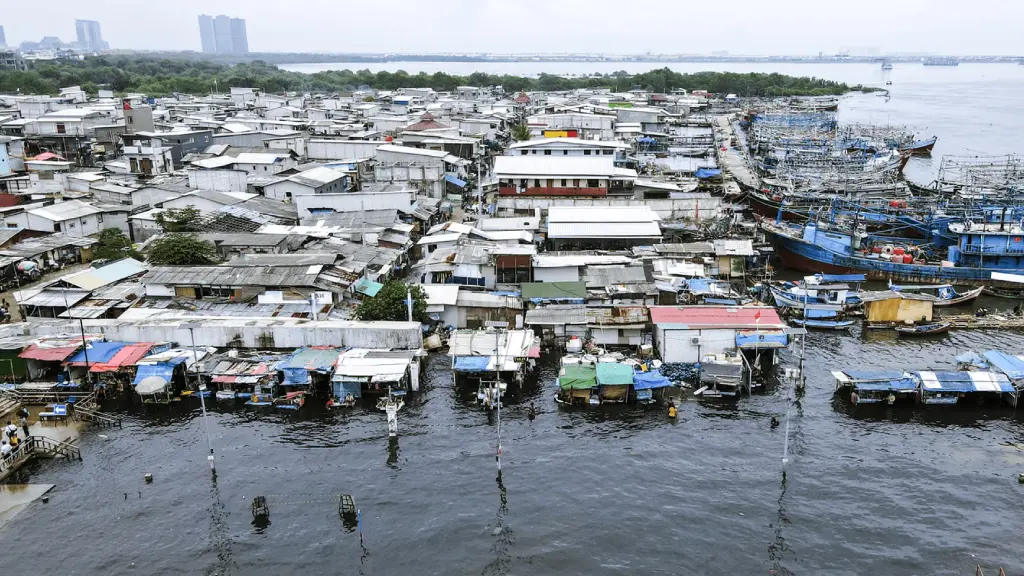In recent years, the phenomenon of cities sinking has emerged as a critical global concern. Across continents, urban areas are gradually subsiding — in some cases at alarming rates — threatening infrastructure, economies, and millions of lives. This article explores what it means when cities sink, the causes behind this unsettling trend, its wide-ranging consequences, and the solutions being developed to combat the issue.
Understanding the Concept of Cities Sinking
Cities sinking, also known as land subsidence, refers to the gradual lowering of ground level beneath urban areas. This sinking occurs when the Earth’s surface compacts or shifts downward, often imperceptibly at first but increasingly severe over time. Famous examples include Jakarta in Indonesia, Venice in Italy, and New Orleans in the United States — all cities grappling with subsidence alongside other environmental challenges.
Scientists track cities sinking using satellite imagery and ground-based sensors, allowing for precise measurement of how much and how quickly land is dropping. These technologies have revealed alarming rates in several metropolitan areas, prompting urgent calls for action.
Why Are Cities Sinking?
Excessive Groundwater Extraction
One of the most significant drivers of cities sinking is the over-extraction of groundwater. As urban populations grow, reliance on underground water supplies increases dramatically. Removing water causes the soil to compact and collapse, leading to surface subsidence. Jakarta, often cited as one of the fastest-sinking cities globally, has suffered severe sinking primarily because of unregulated groundwater pumping.
Urban Development and Construction
Rapid urbanization can exacerbate sinking by adding heavy buildings and infrastructure onto soft or unstable soils. Construction activities compress the ground, further contributing to subsidence. In many fast-growing cities, unplanned development has accelerated land sinking faster than authorities can manage.
Natural Geological Processes
Some cities are naturally prone to sinking due to their geological makeup. Soft sediments, clay, or peat layers beneath the surface can compress under weight or shift due to tectonic forces, contributing to subsidence even without human interference.
Climate Change and Rising Sea Levels
Rising sea levels due to climate change compound the risks associated with cities sinking. Coastal cities face increased flooding and saltwater intrusion, which weakens soil structure and accelerates sinking. Flood-prone cities with subsiding land face a dual threat that puts their futures at significant risk.
The Real-World Impacts of Sinking Cities
Infrastructure Damage and Economic Costs
The effects of cities sinking manifest most visibly through damage to critical infrastructure. Roads crack, buildings tilt or collapse, and bridges weaken. Repairing and retrofitting urban infrastructure places enormous financial strain on local governments and disrupts daily life and commerce.
Increased Flood Risk and Environmental Hazards
Subsidence lowers land elevation, making cities more vulnerable to flooding, especially during storms or high tides. This leads to environmental degradation, damage to ecosystems, and costly flood defenses that may only offer temporary respite.
Social and Humanitarian Effects
The sinking of cities also carries grave social consequences. Residents of affected areas may be displaced due to uninhabitable conditions or property loss. Public health risks rise due to contamination of water supplies and increased flooding-related diseases, disproportionately impacting vulnerable populations.
Global Hotspots of Urban Subsidence
Jakarta, Indonesia
Jakarta has gained global attention as one of the fastest-growing cities. Some parts of the city are subsiding by up to 25 centimeters per year, primarily due to rampant groundwater extraction combined with heavy urban development. The government has initiated major infrastructure projects, including a new capital city move, to tackle these challenges.
Venice, Italy
Venice has struggled with sinking for centuries, worsened by rising sea levels. The city’s famous canals flood frequently, threatening its cultural heritage and tourism. Efforts like the MOSE project aim to protect Venice with flood barriers and other engineering solutions.
New Orleans, USA
New Orleans’ sinking is linked to natural sediment compaction and human factors like levee construction that prevent natural sediment deposition. The city faces ongoing flood risks, especially after Hurricane Katrina exposed vulnerabilities.
Other Examples
Cities such as Mexico City, Tokyo, and Shanghai also experience significant subsidence, each with unique contributing factors and mitigation strategies.
Combating the Problem of Cities Sinking
Sustainable Water Management
A key strategy to slow cities’ sinking involves reducing groundwater extraction. Promoting rainwater harvesting and surface water use helps preserve underground aquifers and stabilizes the soil.
Urban Planning and Green Infrastructure
Building on more stable ground and integrating green spaces and permeable surfaces in urban design can reduce pressure on vulnerable soils. Thoughtful planning can prevent worsening subsidence.
Engineering Innovations
Technologies like elevating buildings, constructing flood barriers, and soil stabilization techniques are being employed worldwide. These innovations provide a crucial defense against subsidence-related damage.
Policy and Community Engagement
Effective governance, regulations to control water use, and engaging communities in sustainability initiatives are essential to addressing the root causes of cities sinking.
Conclusion
The issue of cities sinking is a complex and urgent challenge facing the modern world. Driven by both human activity and natural processes, the consequences are severe and far-reaching, impacting infrastructure, the environment, and society. Through sustainable management, innovative engineering, and coordinated policies, cities can slow or even reverse subsidence, safeguarding their futures for generations to come. Awareness and action today are vital to ensuring the resilience of our urban landscapes against the slow but steady sinking beneath our feet.
Stay Informed with Trending Stories – Join Our Newsletter Today!


